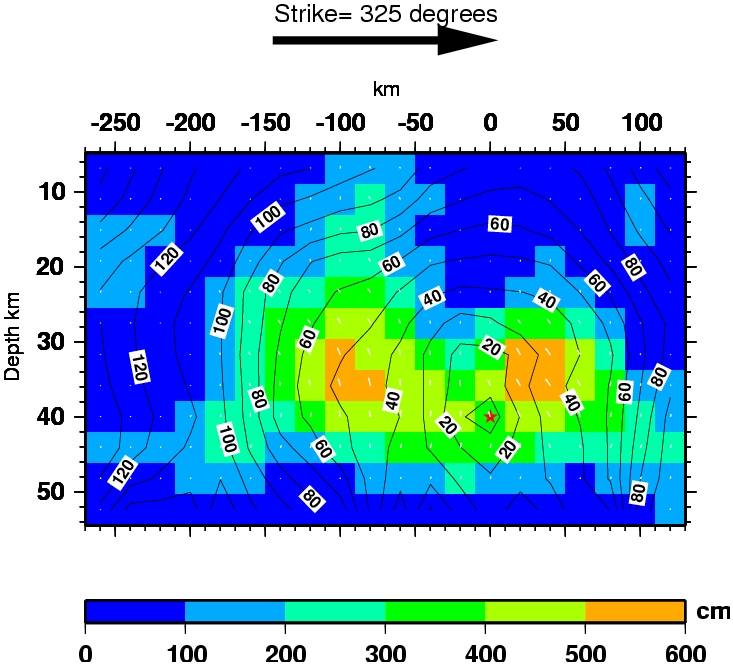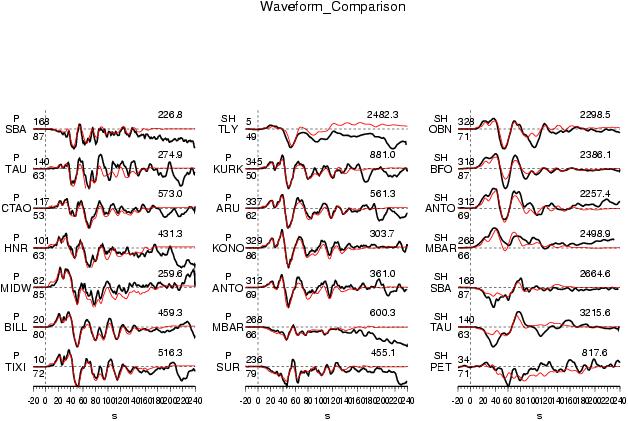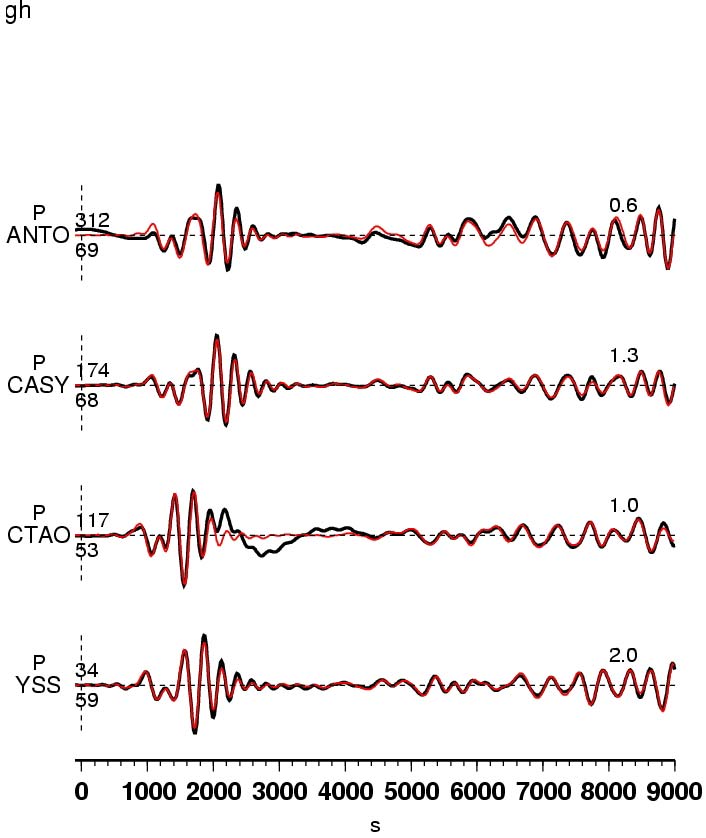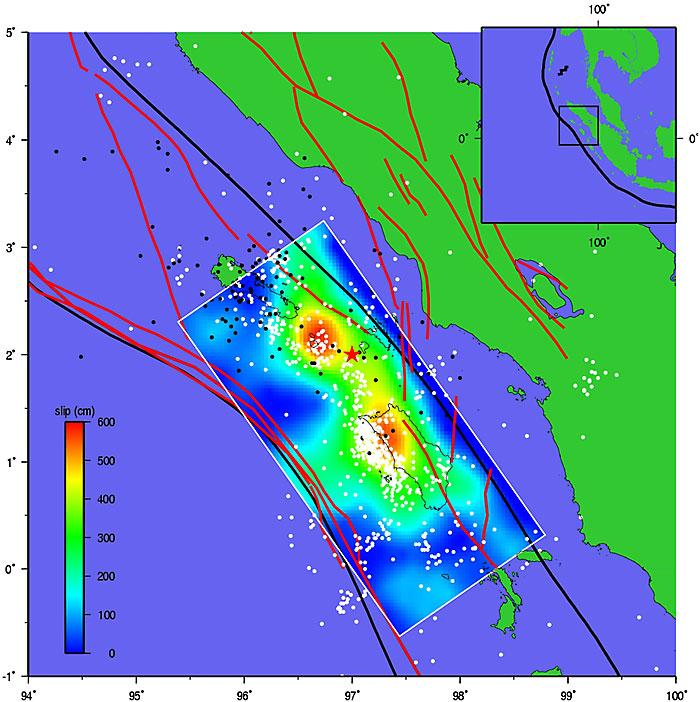Updated Result
05/03/28 (Mw 8.5) , Sumatra Earthquake
Chen Ji, Caltech
DATA Process and Inversion
This is a update of our preliminary result. We have used the GSN broadband data downloaded from the IRIS DMC. We analyzed 13 teleseismic P waveforms and 8 SH waveforms selected based upon data quality and azimuthal distribution. Long period Rayleigh waves at 4 stations are also included to constrain the seismic moment, which are not very well constrained by the teleseismic body waves. The cause will be addressed separately soon. We use the epicenter of the USGS (Lon.=97.01 deg.; Lat.=2.01 deg.) but a larger hypocenter depth (40 km). The fault planes are defined by slightly modifying the quick moment tensor solution of Dr. Polet.Result
After comparing the waveform fits based on two planes, we find that the nodal plane (strike=325 deg., dip=15 deg.) fits the data better. The seismic moment release based upon this plane is 7.62x10**28 dyne.cm using the PREM earth. The centriod location (Lat.=1.61 deg.; Lon.=97.05 deg. depth=34 km) is consistent with that of Harvard CMT.Cross-section of slip distribution

Figure: The big black arrow shows the fault's strike. The colors show the slip amplitude and white arrows indicate the direction of motion of the hanging wall relative to the footwall. Contours show the rupture initiation time and the red star indicates the hypocenter location.
Comparison of data and synthetic seismograms

Figure: The Data are shown in black and the synthetic seismograms are plotted in red. Both data and synthetic seismograms are aligned on the P or SH arrivals. The number at the end of each trace is the peak amplitude of the observation in micro-meter. The number above the beginning of each trace is the source azimuth and below it is the epicentral distance.

Figure: The Data are shown in black and the synthetic seismograms are plotted
in red. Both data and synthetic seismograms are origin time. The number at
the end of each trace is the peak amplitude of the observation in millimeter.
The number above the beginning of each trace is the source azimuth and below
it is the epicentral distance.

Figure: Surface projection of the slip distribution. The ocean is plotted in blue and land is plotted in green. The black line indicates the plate boundary. The white dots are aftershocks downloaded from NEIC.
CJ's Comments:
Download
(Slip Distribution)| SUBFAULT FORMAT | CMTSOLUTION FORMAT |
References
Ji, C., D.J. Wald, and D.V. Helmberger, Source description of the 1999 Hector Mine, California earthquake; Part I: Wavelet domain inversion theory and resolution analysis,Bassin, C., Laske, G. and Masters, G., The Current Limits of Resolution for Surface Wave Tomography in North America, EOS Trans AGU, 81, F897, 2000.
GCMT project: http://www.globalcmt.org/
USGS National Earthquake Information Center: http://neic.usgs.gov
Global Seismographic Network (GSN) is a cooperative scientific facility operated jointly by the Incorporated Research Institutions for Seismology (IRIS), the United States Geological Survey (USGS), and the National Science Foundation (NSF).
‹Back to Slip Maps for Recent Large Earthquakes home page
© 2004 Tectonics Observatory :: California
Institute of Technology :: all rights reserved